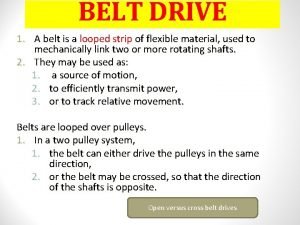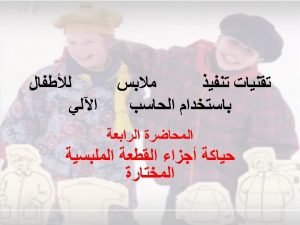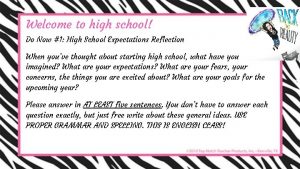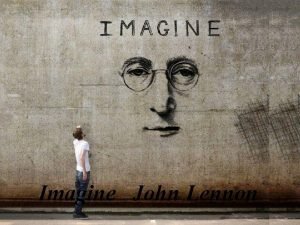How do you Imagine this you drive into










- Slides: 10

How do you…. . Imagine this. . . you drive into a parking lot, get out of the car, and start to walk toward your destination. You decide to cut through a bunch of parked cars and notice that some of them are close together, so when you get to them, you have to turn and adjust your body in order to get through the tight spaces. How do you know whether or not you will fit? How do you brush your teeth without sticking the toothbrush down your throat? How do you know how to pick up that awesome Gingerbread Latte on the table without averting your eyes from your BFF?

Because of your KINESTHETIC SENSE! The reason you are able to sense whether you can fit, what type of movements you need, how to adjust your body position, etc. , is because you have kinesthetic sense This is the ability to sense body position and the movement of muscles, tendons, and joints.

Kinesthetic Sense - the sense of movement - keeps track of body parts relative to each other - knows what types of body movements are needed in different situations

Kinesthetic Sense - Provides constant sensory feedback of the muscles in your body as they move - Kinesthetic sensory receptors are embedded in muscle fibers and joints - These operate in the same way as touch sensory receptors - Sensory receptors send info to spinal cord Spinal cord sends info to brain stem Then it goes to the thalamus Then to the somatosensory cortex

When you are sitting in a car with your eyes closed, how do you know when you start moving? Do you ever feel motion sick when you are traveling on a boat or in a car? Do you like feeling disoriented and dizzy after getting off of a roller coaster? These are all a part of your VESTIBULAR SENSE

Vestibular Sense - The Vestibular Sense is the sense of motion - the kinesthetic sense is more internal, and the vestibular sense provides info about the external environment - - When standing on one leg with your arms in the air, the vestibular sense helps keep you balanced so you have a lesser chance of falling over. If you are on a ride, it helps you know if you are upside down or right side up

Vestibular Sense The “Sense Organ” for the Vestibular System is located in the Inner Ear It is not related to hearing This system has primary responsibility for helping us balance.

Vestibular Sense It also helps us detect speed and motion. Motion in a straight line, such as riding a bike, skiing and driving in a car provides a calming influence over the vestibular system as well. – This is why fussy babies fall asleep in the car when nothing else soothes them.

Vestibular Sense - Vestibular sensory receptors are hair cells These are located inside the semi-circular canals of the auditory system. These canals are filled with fluid Therefore, the hair cells react to gravity to give information about the body’s position: - right/left forward/backward upward/downward.

The sense of PROPRIOCEPTION The kinesthetic and vestibular senses work hand-inhand, together with the rest of the body's senses, especially the visual system, to provide information about the movement and position of the different parts of the body in relation to each other and the immediate environment. - This is known as “proprioception” and is often known as the sixth sense - The five senses allow us to experience the outside world, whereas proprioception allows us to understand our physical place within that world.



















